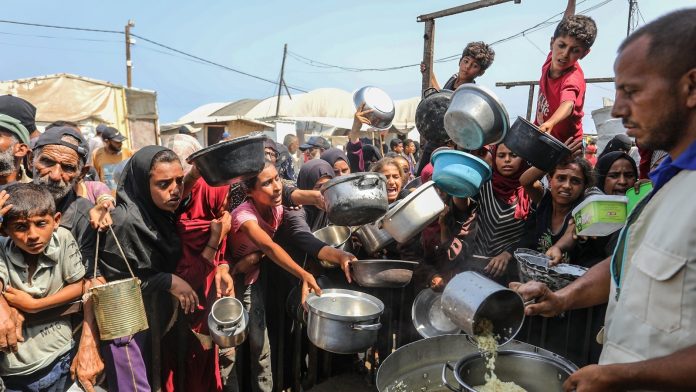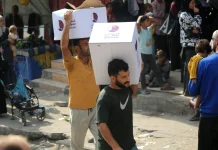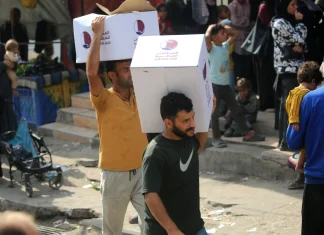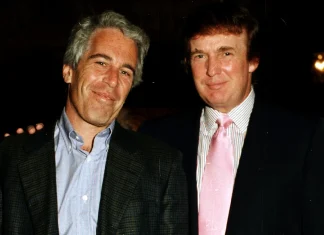Starvation at the Gates: The Struggle for Survival in Gaza’s Blockaded Enclave
In the narrow, densely populated strip of Gaza, life has become a daily battle against hunger, deprivation, and despair. As the blockade imposed by Israel stretches into its sixth month, the humanitarian crisis is intensifying with every day. There simply isn’t enough food to sustain the population, especially its most vulnerable—the children.
Chris McIntosh, Oxfam’s Humanitarian Response Adviser in Gaza, shares a sobering portrait from the ground. Speaking with a palpable urgency, he paints a scene that is difficult to comprehend yet impossible to ignore.
“Malnutrition in children here is severe,” he explains. “Unlike adults, children’s bodies and brains don’t have the resilience to bounce back from prolonged undernutrition. This doesn’t just affect them now—it affects their entire futures, their cognitive development, their immunity, their ability to thrive.”
Imagine a child whose formative years are shadowed not by play, learning, and growth, but by the gnawing pain of hunger. The implications ripple through every corner of Gaza society, creating a generation at risk of permanent physical and psychological harm.
The Invisible Siege: Food as a Weapon
It’s important to offer context. Since early March, Gaza has been under a stringent blockade that restricts not only the flow of goods but also vital humanitarian aid. McIntosh’s words echo warnings sounded by humanitarian groups for months: “Fundamentally, there isn’t enough food making it into the Strip.”
Over a hundred international aid organizations recently made a powerful joint statement accusing Israeli authorities of “weaponizing aid” through new legislation regulating aid groups. These laws, they argue, aren’t just bureaucratic hurdles—they are active barriers blocking aid from reaching those who need it most.
“Requests from dozens of NGOs to bring in lifesaving supplies have been routinely denied,” the letter alleges. “They cite that organizations are ‘not authorized’—but the criteria have become so restrictive and opaque that it effectively shuts out independent humanitarian work.”
Local voices within Gaza echo this frustration. Fatima Muhammed, a mother of five from Deir Al Balah, shares, “We see so many kids looking for scraps in the trash. It breaks my heart because it’s not just about hunger—it’s about humiliation. How can they grow strong when their bellies are empty?”
When a Meal Becomes a Memory
On the streets of Gaza City, the scent of cooking food is now a rarity. McIntosh poignantly notes, “To smell food being cooked is a total novelty these days.” This is the heartbreaking new norm. Where once kitchens hummed with life and laughter, now silence and hunger predominate.
The volume of aid trucks permitted entry into Gaza is a mere fraction of what’s required for survival. What’s left are symbolic gestures—aerial drops of supplies from planes parachuted into the area, which McIntosh describes bluntly as “embarrassing stunts.” These drops, he says, “lack dignity and efficiency.”
The crisis doesn’t stem from NGOs failing standards or ignoring security protocols, McIntosh insists. “The delays and denials are systematic and policy-driven,” he says, looking squarely at Israeli authorities. “It isn’t about security—it’s about control.”
Displacement and Desperation: Gaza’s Human Toll
The scale of suffering is staggering and deeply human. Hundreds of thousands have been displaced within Gaza, forced to live in tents and temporary shelters under relentless strain. The United Nations estimates that tens of thousands of people have lost their lives in Israeli attacks, and with much of the population uprooted, famine looms like a dark cloud.
Bushra Khalidi, an Oxfam aid official based in Gaza, quantifies the heartbreak. “We have over $2.5 million worth of essential goods—including water, sanitation, hygiene products, and food—that have been blocked from entering,” she reveals. “The inability to bring these essentials into Gaza only deepens the crisis.”
Adding to the complexity, recent aid regulations demand that NGOs submit to stringent controls—regulations that threaten their independence and freedom of speech. Khalidi warns, “Aid groups’ ability to operate here may come at the cost of their independence and their ability to speak out. That’s a dangerous precedent.”
A World Watching, Yet Feeling Powerless
Global humanitarian agencies have managed to resume some deliveries, but the scale is woefully inadequate. The trucks that pass through checkpoints are few and far between, and the resources they carry are but a drop in an ocean of needs.
This crisis invites us to reflect deeply. How do international politics and power dynamics impact the basic human right to food and dignity? What does it say about global accountability when aid organizations struggle so fiercely to serve populations under siege?
There is no easy answer, but the voices from Gaza, like those of McIntosh and Khalidi, tell a story that demands urgency and attention. They remind us that behind statistics and headlines are flesh-and-blood people—families, children, and communities fighting not just for survival, but for the chance to live.
Bridging the Divide: Understanding Hunger in Conflict Zones
The situation in Gaza isn’t isolated. Around the world, conflicts disrupt food systems, displacement fractures lives, and political blockades choke off essential services. According to recent data from the World Food Programme, over 45 million people worldwide face emergency levels of hunger due to conflict-induced access issues.
Gaza’s story is a stark and urgent call to action—a reminder that when political choices put food out of reach, the consequences ripple across generations and geographies.
What can the international community do? How should we think about aid that is politicized versus aid that is humanitarian? And most importantly, how do we listen to and uplift the voices of those living these realities?
In the end, the question lingers: when will Gaza’s children be able to grow without the shadow of hunger clouding their futures?
This crisis challenges us all to look beyond borders and ideologies—to see the shared humanity beneath. Because food, after all, is more than sustenance. It is dignity, hope, and the fragile heartbeat of survival.










